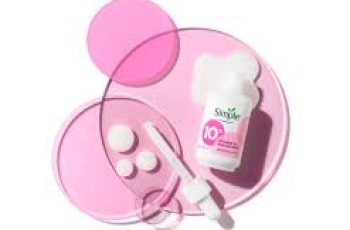
Can You Use Retinol with Niacinamide and Hyaluronic Acid?
In the vast world of skincare, retinol, niacinamide, and hyaluronic acid stand out as some of the most beloved ingredients.
Chances are, you’ve encountered at least one in your beauty routine, even if you didn’t realize it. But with so many options available, questions about combining these ingredients often arise.
How do they work together? Can they be used in the same routine? And what kind of results can you expect?
In this article, we’ll break down the science behind retinol, niacinamide, and hyaluronic acid. We’ll explore how to safely combine them and the best ways to maximize their benefits.
By the end, you’ll be ready to confidently use these powerhouse ingredients in your skincare regimen.
What Are Retinol, Niacinamide, and Hyaluronic Acid?
Before diving into how to use them together, it helps to understand what each ingredient does.
Retinol is a form of vitamin A, widely known for its powerful anti-aging effects. It speeds up skin cell turnover, which means it helps your skin shed old, dead cells and reveal fresh, youthful skin underneath.
Retinol is a multi-tasker: it can reduce fine lines, wrinkles, dark spots, and even acne. However, it can cause dryness and irritation, especially when you first start using it.
Niacinamide, also known as vitamin B3, is a skin-restoring ingredient prized for its ability to improve the skin barrier. It acts as a humectant, meaning it helps draw water into the skin and lock it in.
This keeps your skin hydrated, smooth, and less prone to damage from environmental stressors like pollution and UV rays. Niacinamide also helps regulate oil production, which can reduce the appearance of pores.
Hyaluronic acid is a naturally occurring molecule in your skin, famous for its incredible hydration power. One gram of hyaluronic acid can hold up to six liters of water!
It helps your skin stay plump, moist, and resilient by attracting and retaining water. Its humectant nature supports a healthy skin barrier and aids in skin repair.
Can I Mix Hyaluronic Acid with Retinol and Niacinamide?
Many people worry about irritation or allergic reactions when combining skincare ingredients. Fortunately, niacinamide and hyaluronic acid are gentle and work well alongside retinol.
Retinol is known to cause dryness or flaking initially, but pairing it with hydrating ingredients like niacinamide and hyaluronic acid can soothe and reduce these side effects.
Using these three together can help balance your skin, making your routine more effective and comfortable.
Humectants like niacinamide and hyaluronic acid draw moisture into the skin, counteracting the drying effects of retinol.
This combination is especially helpful for those with sensitive or dry skin who want the anti-aging benefits without harsh irritation.
The Best Way to Apply Retinol, Niacinamide, and Hyaluronic Acid Together
Order matters when applying multiple active ingredients to get the best results. Start with retinol on freshly cleansed skin. This allows the retinol to penetrate deeply and work at a cellular level. Next, apply hyaluronic acid to boost hydration and soothe any dryness caused by retinol. Finish with niacinamide to regulate oil production and lock moisture into your skin.
This order helps each ingredient perform optimally. Retinol stimulates renewal, hyaluronic acid keeps your skin hydrated, and niacinamide strengthens your skin’s barrier and balances sebum.
Using them together regularly can improve skin texture, tone, and resilience.
Can I Use Retinol After Niacinamide?
While applying retinol first is usually recommended for best penetration, it is safe to use retinol after niacinamide if needed.
The key is allowing enough time between applications or using formulations designed to combine these ingredients.
Some skincare products now contain both retinol and niacinamide, offering convenience and reducing the risk of irritation.
If you’re layering separate products, try waiting 5 to 15 minutes between applying niacinamide and retinol.
This gap lets your skin absorb each ingredient without disrupting their effectiveness or causing pH imbalance, which can lead to irritation.
How Long After Using Niacinamide Can I Apply Retinol?
This question is important because skincare products vary in pH, and a mismatch can cause irritation. Retinol works best around a pH of 5.5 to 6, while niacinamide is effective between pH 5.0 and 7.0. This overlap means they can be applied back-to-back or with a short waiting period of about 5 to 15 minutes without disrupting the skin’s pH or barrier.
If you are new to using these ingredients together, start with a longer wait time and gradually reduce it as your skin builds tolerance. Monitor your skin’s response closely and adjust your routine accordingly.
Can I Use Niacinamide with Hyaluronic Acid?
Absolutely! Niacinamide and hyaluronic acid make a fantastic duo. Since your skin is the largest organ but not a vital one, it often doesn’t get the hydration it needs from water you drink.
This can lead to dehydration, which mimics signs of aging such as fine lines and dullness.
Hyaluronic acid replenishes moisture by attracting water to the skin surface. Niacinamide supports this by strengthening the skin barrier and locking that hydration in.
Together, they keep your skin supple, healthy, and better able to absorb other skincare products, enhancing your overall routine.
Should I Use Hyaluronic Acid Before or After Retinol?
Since hyaluronic acid hydrates the skin, it is best applied after retinol.
Applying it as one of the last steps in your routine ensures your skin stays moisturized and reduces the dryness or irritation retinol might cause.
After applying retinol, follow up with a hyaluronic acid serum. This hydrates your skin deeply and locks in moisture, helping maintain a strong skin barrier.
This helps ward off damage from environmental stressors and keeps your skin looking fresh and plump.
What Goes First: Niacinamide or Hyaluronic Acid?
Both niacinamide and hyaluronic acid are water-based and work as humectants. For optimal benefit, apply hyaluronic acid first.
This boosts your skin’s hydration by replenishing water levels in the skin barrier.
Next, apply niacinamide. It regulates oil production and supports the microbiome, helping keep your skin balanced and healthy. This sequence ensures hydration is maximized, while skin health is maintained.
Tips for Introducing Retinol, Niacinamide, and Hyaluronic Acid Into Your Routine
If you’re new to retinol, start slowly by using it 1-2 times a week and gradually increase frequency as your skin builds tolerance. This reduces the risk of irritation.
Always apply retinol at night because sunlight can degrade it and increase skin sensitivity. Follow with hyaluronic acid and niacinamide to soothe and hydrate your skin.
Use a broad-spectrum sunscreen every day while using retinol, as your skin will be more sensitive to UV damage.
What Results Can You Expect?
When combined correctly, retinol, niacinamide, and hyaluronic acid can transform your skin. Retinol will speed up cell turnover, reducing fine lines, wrinkles, and dark spots.
Niacinamide strengthens your skin’s natural barrier and evens out skin tone, while also calming redness and irritation.
Hyaluronic acid keeps your skin hydrated and plump, reducing the appearance of fine lines caused by dryness.
Together, these ingredients promote a youthful, radiant, and resilient complexion.
Final Thoughts
Understanding how retinol, niacinamide, and hyaluronic acid work together allows you to customize your skincare for maximum benefits.
While retinol targets aging and skin renewal, niacinamide and hyaluronic acid protect and hydrate, balancing out retinol’s potential dryness.
By applying them in the right order and with care, you can enjoy glowing, healthy skin without irritation.
If you’re curious about other ingredient combinations or want personalized advice, feel free to ask! And don’t forget to follow us on Instagram for product updates, tips, giveaways, and exclusive discounts.


